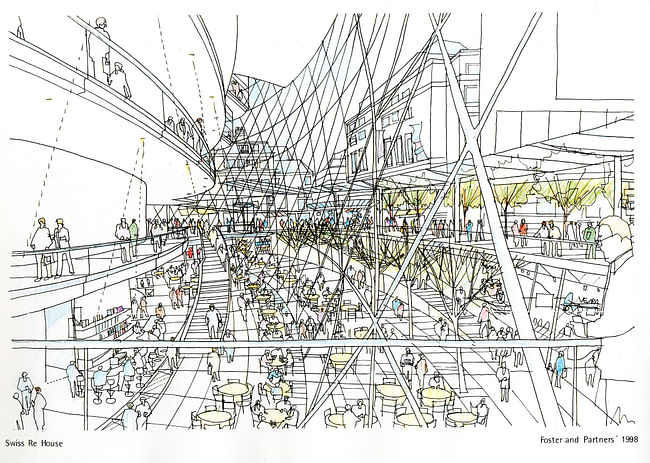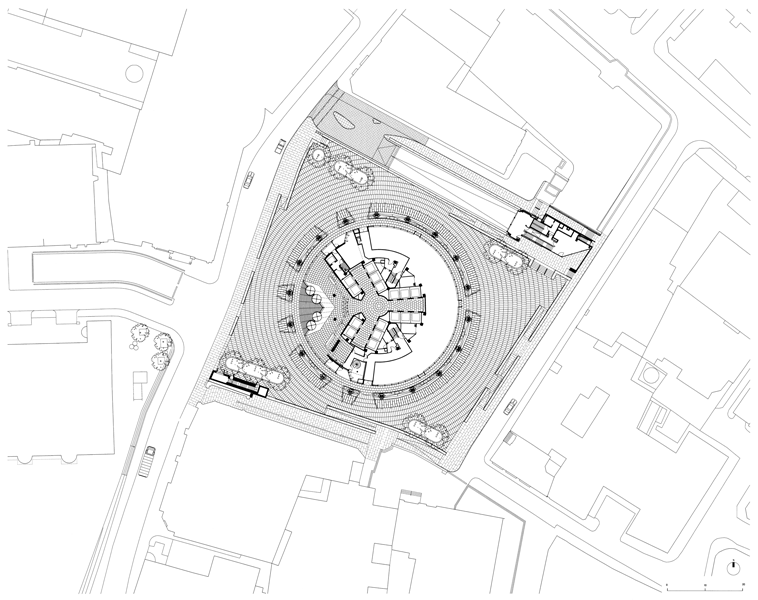Investing in risk: How the Gherkin became a British icon

This perspective sketch from fall 1998 shows how the base of the building might function as an airy retail zone extending below plaza level. Foster + Partners, Swiss Re House, Record Set of Presentation, 19th and 21st October 1998, 1998. Courtesy of Foster + Partners.




















